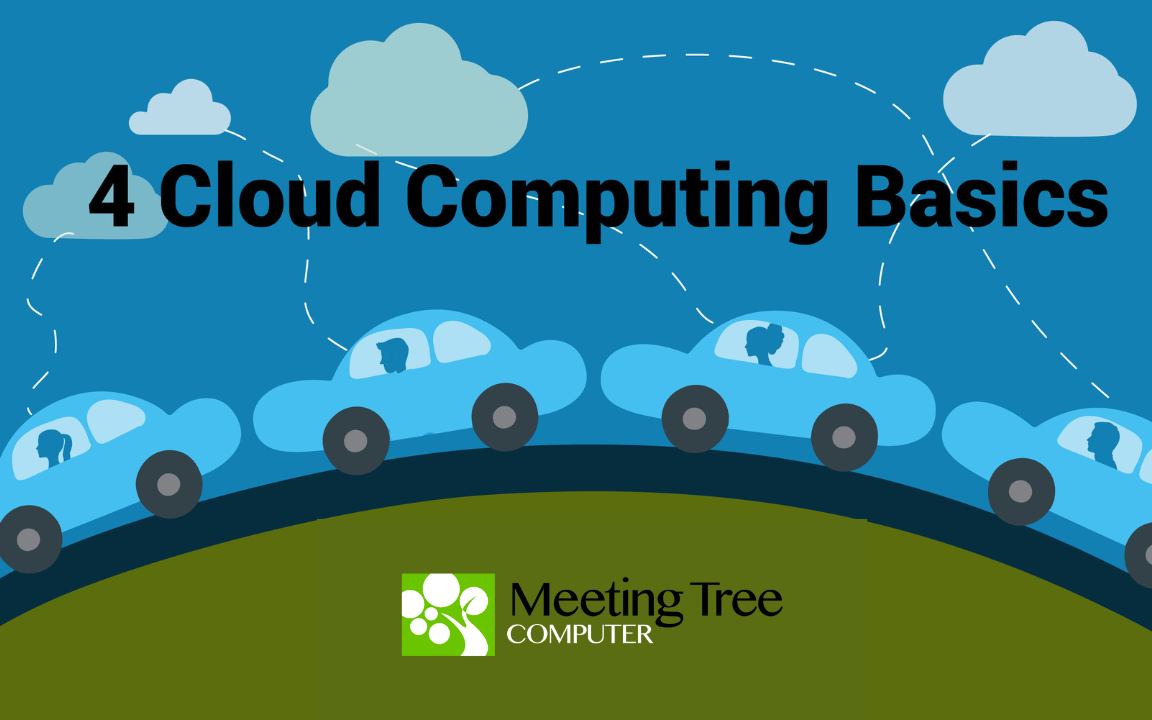Whether you’re a tech-savvy pro or someone who simply enjoys the conveniences of modern technology, understanding the basics of cloud computing is important. In fact, I bet you are pretty familiar with the concept, you just don’t know it. Smart phones, email, internet browsing all rely on the magic of the cloud. It’s the invisible force that seamlessly connects us to a vast network of resources, allowing us to access our files, stream movies, and collaborate with others, all with a simple tap or click.
But what exactly is this elusive cloud, and how does it work its magic? In this blog post, we’ll demystify the world of cloud computing and break down the fundamentals in a way that anyone can understand.
As we read and breathe, a remote network of computing devices (servers) hosted on the internet stores, manages, and processes your data. This advanced computing infrastructure delivers your on-demand computing resources through a cloud services platform, from database storage and applications to many other IT resources. Google, Amazon, Verizon, Office 365, Salesforce, Dropbox… to name a few, are all cloud computing enablers.
But what exactly is going on in this cloud computing highway of information?
- What Is The Cloud?
Cloud computing is the on-demand availability of computer system resources, especially data storage and computing power, without direct active management by the user.
Picture it as a magical storage space for your digital goodies. Instead of saving files, applications, or data on your local device, you store them on remote servers connected to the internet. These servers are managed by cloud service providers like Amazon Web Services (AWS), Microsoft Azure, or Google Cloud. It’s like having a virtual computer that you can access from anywhere with an internet connection.
2. What Are the Benefits Of Cloud Computing?
First off, it provides incredible flexibility and scalability. Need more storage or computing power? No problem! Scaling up or down is easy and based on your requirements. Plus, the cloud allows for collaboration and easy data sharing among teams, as users don’t have to wait for a teammate to finish their work on a document; instead, they can make contributions at any time. Oh, and did I mention cost savings? With the cloud, you pay for what you use, and there’s no need to invest in expensive infrastructure upfront.
- Is The Cloud Secure?
Yes. Cloud providers invest heavily in robust security measures. However, it is still crucial to take precautions on your end as well. Encrypting sensitive data, implementing strong access controls, and regularly updating passwords are just a few practices to ensure your information stays safe in the cloud. Remember, security is a shared responsibility between you and your cloud provider.
- Are All Cloud Solutions the Same?
No, when it comes to cloud computing, you have options! Public cloud services like Google and Dropbox are shared among multiple users and are typically more cost-effective. Private clouds, on the other hand, are dedicated to a single organization, offering more control and customization options. Depending on your specific needs and data sensitivity, you can choose the deployment model that suits you best.
These are just some basics, but they give you a starting point for your cloud computing journey. If you have more questions, download your copy of our recently published report, “8 Critical Questions You Must Ask Before Moving Your Data To The Cloud,” here.
The future is in the Cloud. So, call us today; our technicians are standing by to help you unlock the power of seamless connectivity, scalability, and collaboration.

